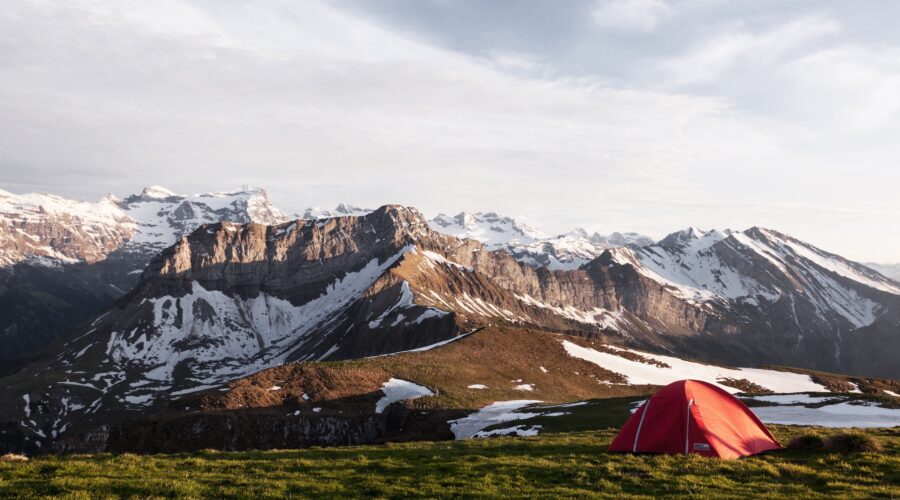When planning a backpacking trip, it is important to choose the right gear. A good backpack is essential, as it needs to be able to carry all of your gear and be comfortable to wear for extended periods of time. A lightweight tent and sleeping bag are also important, as they will keep you warm and dry at night. Additionally, a camping stove, water filter, and appropriate clothing.
Backpacking can be a challenging and rewarding experience, but it also requires proper planning and preparation. It is essential to be familiar with the area you plan to visit and to be prepared.
When choosing a destination for your backpacking trip, it is important to consider the level of difficulty of the trail and the weather conditions. Some popular backpacking destinations include national parks, wilderness areas, and mountain ranges. It is also important to obtain any necessary permits and to be aware of any regulations or rules for the area you plan to visit.
Set up camp, and explore the surrounding area. Take a leisurely stroll around the campground and get familiar with the facilities and amenities available. After setting up camp, take a short hike on one of the nearby trails to get a sense of the local flora and fauna. As the day comes to a close, enjoy a campfire meal and get a good night’s rest in preparation for the days ahead.
Set up camp, and explore the surrounding area. Take a leisurely stroll around the campground and get familiar with the facilities and amenities available. After setting up camp, take a short hike on one of the nearby trails to get a sense of the local flora and fauna. As the day comes to a close, enjoy a campfire meal and get a good night’s rest in preparation for the days ahead.
Set up camp, and explore the surrounding area. Take a leisurely stroll around the campground and get familiar with the facilities and amenities available. After setting up camp, take a short hike on one of the nearby trails to get a sense of the local flora and fauna. As the day comes to a close, enjoy a campfire meal and get a good night’s rest in preparation for the days ahead.
Set up camp, and explore the surrounding area. Take a leisurely stroll around the campground and get familiar with the facilities and amenities available. After setting up camp, take a short hike on one of the nearby trails to get a sense of the local flora and fauna. As the day comes to a close, enjoy a campfire meal and get a good night’s rest in preparation for the days ahead.
Set up camp, and explore the surrounding area. Take a leisurely stroll around the campground and get familiar with the facilities and amenities available. After setting up camp, take a short hike on one of the nearby trails to get a sense of the local flora and fauna. As the day comes to a close, enjoy a campfire meal and get a good night’s rest in preparation for the days ahead.
Climbing Rinjani is tough; but anyone in reasonable shape should be able to manage. Porters will be provided throughout the climb but you are expected to carry your own personal daypack of less than 8 kilograms. Normal trekking throughout except for some scrambling towards the summit. No rock climbing or technical climbing skills are needed. Summit sunrise climb is entirely optional, climbers who would like to conserve their energy instead could choose to have a longer rest and wait for their teammates at the crater rim.
Any time during the dry months from April to November. The mountain is closed for hiking during the rainy season from December to March.
The typical route which covers the crater rims, summit and lake takes 3D2N to cover. The trekking durations are: Day 01 ~ 8 hrs; Day 02 ~ 11 hrs; Day 03 ~ 10 hrs. (Timings are estimated and depends on the individual trekker’s physical stamina and conditions
The summit day is on Day 02 of the trek. You will wake up around 2-3am for the summit climb. It takes about 3-4 hrs to reach the summit (for sunrise if you can reach on time) and another 3 hours to descend back to the camp site. If you do not wish to attempt the summit climb, you may stay at the camp site to wait for the summiteers to return.
The temperature in the day is around 15 – 25 degree Celsius at and below the rims. At night, the temperature at the Rim is usually below 10 degree Celsius. At times, it can be near freezing especially towards the summit.
A quick dry synthetic material shirt (can be either short or long sleeve) as the base layer, a good quality fleece jacket/woollen pull-over as the middle later and a thick wind proof jacket as the outer layer. A waterproof and windproof trekking pants is desirable and a pair of woollen gloves, beanie and scarf for additional cold protection.
+6282339758772
dhynsrinjani@gmail.com
WhatsApp us

